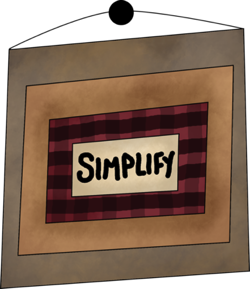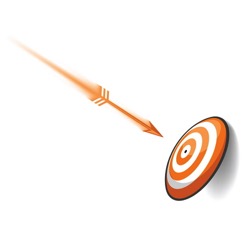Simplification Made Simple
 As we used to say in the radio biz, “Here’s a blast from the past”: Life Gets Simpler When You Simplify – Grasshopper
As we used to say in the radio biz, “Here’s a blast from the past”: Life Gets Simpler When You Simplify – Grasshopper
I believe we take too many steps to get where we want to go; we rarely take the most direct route. That may be because of a lack of knowledge, bullheadedness or something else, but each of those pathways is a detour away from a simpler life.
You won’t get your knowledge from an advertisement. They’re mainly designed to show you where you are lacking and how their product or service will fill your void. Knowledge will come from someone who already has what you want. Find the person who has a simplified life and notice that their happiness quotient is higher than yours. Find out what they’re doing and do your version of it. That’s putting knowledge to use. That’s simplification.
Figuring it out on your own may take a lifetime and that’s just pure bullheadedness (translation, stupid). Again, there are people who have already blazed the trail. Follow in their footsteps. It’s the simplest way to simplify, and the smartest.
There is a principle of parsimony known as “Occam’s Razor” which states, “that among competing hypotheses, the one that makes the fewest assumptions should be selected.” Simplifying your life means to ignore the assumption that’s being sold to you and get sold on one that’s already working.
The simple life is not filled with conditions that need to be present for you to feel happy or peaceful. The simple life is celebrating victories wherever you find them vs. planning and scheming to have countless notches on your belt – a game of “who dies with the most?”
Simplifying means taking stock of what you’re stocking up on and finding out if the effort is worth it. My experience is that the happiest people are respectful and thankful for everyday things that the striver takes for granted and doesn’t think are enough.
There is a questioning technique that continually asks, “What will that get you?” For example, if you say, “I want a big house with acres of land,” you are asked, “What will that get you?” You may answer, “The house I’ve wanted all my life.” Again, you’ll be asked, “What will that get you?” This back and forth can go on for a while until you drill down for a deeper answer that addresses what you really want. It’s usually some form of peace of mind or a feeling of happiness.
The goal isn’t really the house; it’s the feeling you believe you’ll have if you get your desire. Simplifying just has you go directly for the feeling without the conditions. We’ve assumed that “this, that and the other” has to be in place for us to be happy or feel at peace, and that’s complicated. It’s simpler than that. The peace and happiness of a simpler life are fewer assumptions away.
Certainly go after what you want, just don’t buy into someone else’s idea of what you should have to be more peaceful and happy.
If you find yourself continually striving and not arriving, it may be a signal to take the shortcut to the simpler life – appreciating what you have. It’s a lot more peaceful with a lot less strife.
All the best,
John
Be Sociable, Share!

 Here’s a Throwback Thursday tidbit from The Grasshopper: “Reclaim Your Spirit And Take Aim On Living.”
Here’s a Throwback Thursday tidbit from The Grasshopper: “Reclaim Your Spirit And Take Aim On Living.”  I love alliteration, so it follows that I love “Flashback Friday.” It’s in the “Way Back Machine” that I found this Grasshopper nugget: “Discover Yourself In The Arc Of A Thought.”
I love alliteration, so it follows that I love “Flashback Friday.” It’s in the “Way Back Machine” that I found this Grasshopper nugget: “Discover Yourself In The Arc Of A Thought.” Here’s a “Way Back Wednesday” Oldie but Goodie from The Grasshopper: “You’ve Never Won An Argument With Your Mind.”
Here’s a “Way Back Wednesday” Oldie but Goodie from The Grasshopper: “You’ve Never Won An Argument With Your Mind.”  The Grasshopper offered this yesterday as I was lamenting my woes to the ethers: “Your biggest problem is you.”
The Grasshopper offered this yesterday as I was lamenting my woes to the ethers: “Your biggest problem is you.” The Grasshopper is rarely as pejorative as he was yesterday when he chirped: “If you’re too stupid to recognize pander, you’ll always be led.”
The Grasshopper is rarely as pejorative as he was yesterday when he chirped: “If you’re too stupid to recognize pander, you’ll always be led.”
 I was chatting with my friend Paul the other day and casually said that one of my main criticisms about myself is that I’m not curious. I said that I saw it in others but lacking in me.
I was chatting with my friend Paul the other day and casually said that one of my main criticisms about myself is that I’m not curious. I said that I saw it in others but lacking in me.